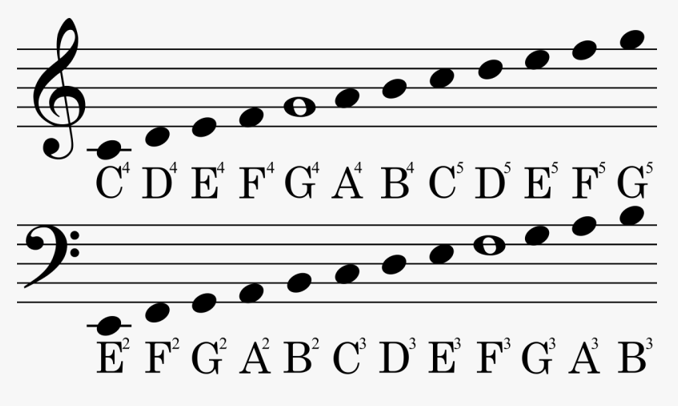Do you ever stop and wonder why there are only seven notes in music? Why can’t we have more or less? Well, it turns out that the number of notes in an octave is quite arbitrary. But why did musicians settle on seven? This article will explore the history of musical notes and how they evolved. We will also discuss some of the benefits of having seven notes in an octave. So if you’re curious about musical notation, keep reading.
There 7 musical notes because when you divide the octave into 12 equal steps, each step is a half-step. A half-step is the smallest distance between two notes on a piano keyboard. So by dividing the octave into 12 steps, we get seven whole notes and five half-notes.
Benefits to having seven musical notes
There are many benefits to having seven musical notes in an octave.
- For one, it allows for a greater range of expression.
- With seven notes, musicians can create a wider variety of melodies and harmonies.
- Additionally, having seven notes makes intervals more distinct and easier to sing or play on an instrument.
History of musical notes
The history of musical notes is fascinating! It dates back to the ancient Greeks who believed that music was divine and could heal people or even change their moods.
Greeks and modes
The Greeks developed a system called modes, consisting of seven musical notes ranging from G sharp through A flat. This mode is still used today as the major scale (do re mi fa, so la ti do). The Greek instruments were crude by modern standards, but they greatly influenced Western music for centuries afterward
Roman and Church modes
The Roman Empire conquered the Greeks in 146 BC, and they soon adopted the Greek modes. However, they added an extra note called the Dorian mode, based on D sharp.
This mode is still used today in classical music. The Church also got involved in music during this time, and they developed a new set of musical notes based on their religion.
Medieval era
During the Medieval era, there was no standardization of notes or intervals. Each region or country had its own set of notes, and musicians would often cross borders to perform. This led to a lot of confusion among musicians, and many songs were written with multiple melodies that didn’t quite fit together!
The Renaissance and Baroque eras
During the Renaissance, musicians began experimenting with new sounds. They developed a ” modal system,” which was based on six modes (Dorian, Phrygian, Lydian, Mixolydian).
This system allowed for more complex harmonies than previously possible, using only five notes at once. In addition to this innovation came an increase in the popularity of orchestras that could play these songs written for larger groups of people.
The Baroque era saw further developments like major/minor keys and chromatic scales (which have all 12 different pitches). These changes made writing music that sounded good even when by one person.
The classical era
By the time of Mozart, there were 12 different notes in an octave (C major scale), and each one had its name like “Do” or “Re.” These names would change with every key signature to be used as solmization syllables instead of only C-D etc.
This meant that musicians no longer needed to memorize which note was which. They just sang from memory using these names when playing their instruments; this made it much more convenient for them since now any musician could play almost any song even if they didn’t know how many sharps/flats it had in its key signature or what those might be called by today’s standards.
The modern era
And so we come to the present day where there are now seven notes in an octave (A minor scale), and each one has its letter name.
This system is still used today by composers worldwide, and it’s unlikely that we’ll be going back to using only five or six notes anytime soon.
We’ve come so far from those early days when there were only seven musical notes. Today, we have over 100 different types of scales, with each one having its unique sound and feeling to it.
It’s easy enough now to compose your songs without too much trouble if you know how many steps are between each note in your chosen scale.
But no matter how many new notes get added along the way, we’ll always have a soft spot in our hearts for those seven original notes that started it all.
So why are there seven musical notes?
Well, as you can see, it’s a long and complicated history that dates back to ancient Greece. But ultimately, having seven different notes allows for a greater range of expression and makes intervals more distinct. This makes it easier for musicians to write complex harmonies and play songs with multiple melodies. Plus, who doesn’t love those classic seven notes that we’ve heard for centuries?
Who invented 7 notes of music?
Guido d’Arezzo, an Italian monk, is credited with the invention of solfège, which uses syllables to represent notes. He based it on the first seven letters of the alphabet. This system eventually became more popular than actual note names and is still used today.
conclusion
So there you have it! Seven musical notes might seem like a lot to remember, but with a little practice, it’s easy enough to get the hang of. And once you do, you’ll be able to play any song that comes your way. So why not give it a try? You never know what amazing new tunes you might find yourself creating.

